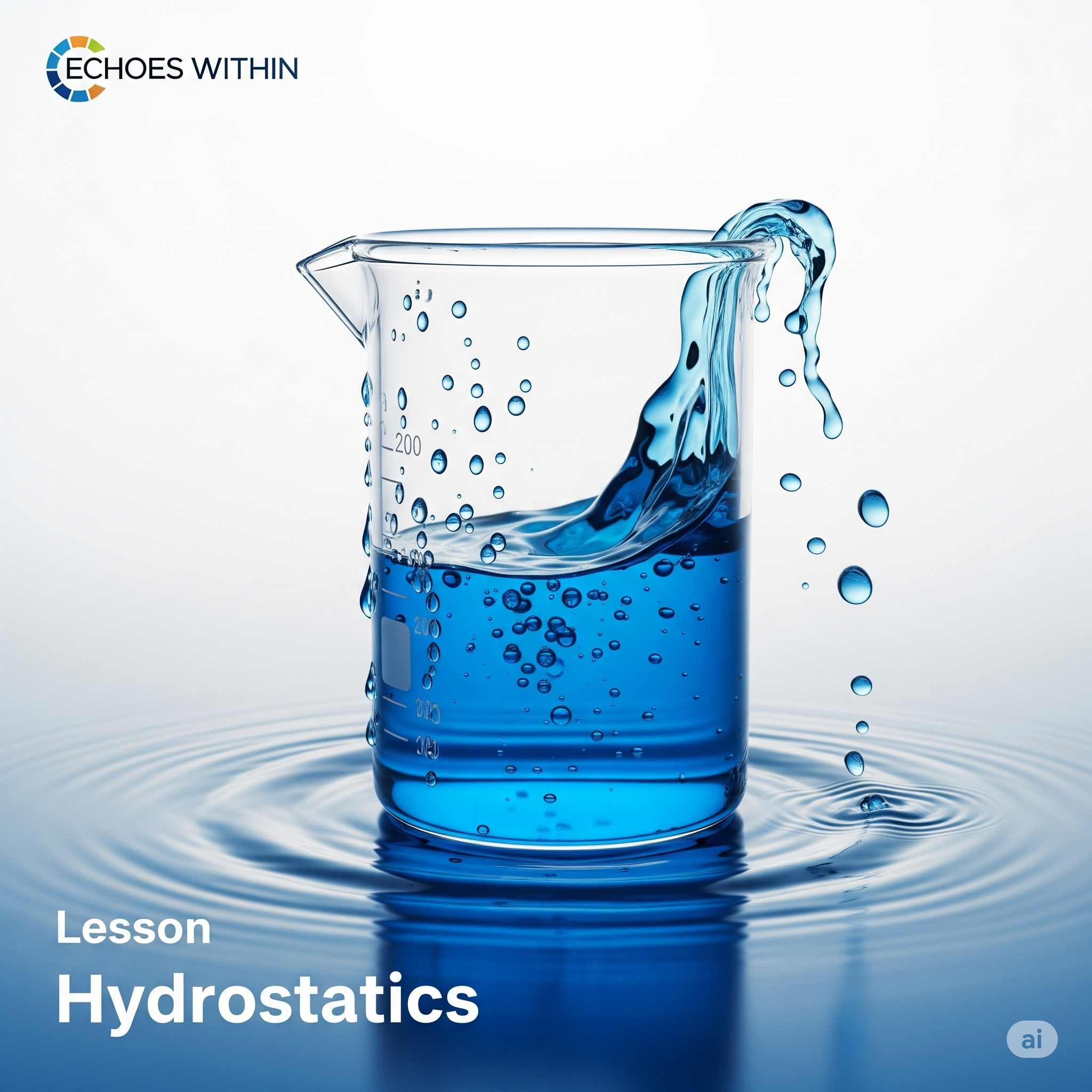
Hydrostatics: Summary
Here is a summary note for the lesson Hydrostatics, written in clear, concise, and student-friendly language. This is ideal for Grade 9–11 NEB Science or Bridge Course level.
Hydrostatics is the branch of physics that deals with fluids at rest. It focuses on understanding how pressure is exerted by fluids and how objects behave when placed in them.
🔑 Key Concepts:
🧪 1. Pressure in Fluids
-
Pressure is defined as force per unit area.
P=F/A
-
In fluids, pressure increases with depth.
P
Where:
-
= depth of fluid
-
= density of fluid
-
= acceleration due to gravity
🧪 2. Pascal’s Law
-
Pascal’s Law states:
“Pressure applied to an enclosed fluid is transmitted equally in all directions.” -
Applications: Hydraulic brakes, lifts, press machines
🧪 3. Density and Relative Density
-
Density (ρ) = Mass / Volume
ρ=m/V
-
Relative Density = Density of substance / Density of water
-
No unit (it’s a ratio)
-
🧪 4. Buoyancy (Upthrust)
-
When an object is placed in a fluid, it experiences an upward force called the buoyant force or upthrust.
-
Buoyant force depends on:
-
Volume of the object submerged
-
Density of the fluid
-
Gravitational acceleration
-
🧪 5. Archimedes’ Principle
“When a body is fully or partially immersed in a fluid, it experiences an upward force equal to the weight of the fluid displaced.”
-
Used to:
-
Find the density of an object
-
Explain why objects float or sink
-
🧪 6. Conditions for Floating
-
An object floats if:
-
Its weight = Buoyant force
-
Its density < density of fluid
-
-
An object sinks if:
-
Its weight > Buoyant force
-
Its density > density of fluid
-
📌 Important Applications
-
Submarines
-
Ships
-
Hydrometers
-
Floating of icebergs
-
Designing hydraulic systems
🧠 Remember:
-
Pressure increases with depth.
-
Buoyant force acts upward.
-
Archimedes’ Principle explains floating and sinking.
-
Pascal’s Law applies in all hydraulic machines.
🧠 Quiz Tips:
- Pressure depends only on height and density, not shape (Pascal’s principle).
- Relative density = Volume submerged / Total volume
- 1 Pascal = 1 N/m²
- Upthrust = Weight in air − Weight in liquid
- Pressure P=F/A, so doubling A halves P
- Sea water is denser than river water, so the ship needs to displace less volume for the same buoyant force — it floats higher.
- Upthrust increases as more volume is submerged.
- If an object is fully submerged and neither sinks nor rises, its density equals the fluid’s.
